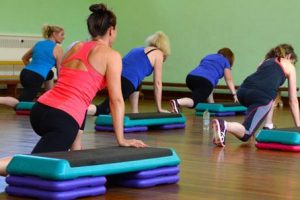Fitness is a lifelong journey that encompasses various approaches and methods, each designed to help individuals improve their health and achieve their desired physical goals. Among these methods, gravity training, often referred to as bodyweight training, has gained popularity for its accessibility and effectiveness. This article will take you on a deep dive into gravity training, offering insights and guidance on how to correctly perform basic exercises, and providing a comprehensive view of this fitness approach.
Gravity training, as the name suggests, uses your own body weight as the primary source of resistance. This means you don’t need costly gym memberships or specialized equipment to get started. Whether you’re a beginner taking your first steps on your fitness journey or an experienced athlete seeking to refine your technique, gravity training can be a valuable addition to your regimen.
The Foundations of Gravity Training
Before we delve into the specifics of gravity training exercises, it’s crucial to understand the foundational principles that make this method unique and effective. Gravity training relies on the Earth’s gravitational pull to create resistance, which your body must overcome. This simple yet powerful concept allows you to engage multiple muscle groups simultaneously, making it an excellent choice for building functional strength.
Functional strength is the ability to perform everyday tasks with ease and efficiency. Whether it’s lifting groceries, carrying a heavy backpack, or playing with your kids, a foundation of functional strength makes life more manageable and reduces the risk of injury. Gravity training is a pathway to achieving this strength, all while improving your flexibility and balance.
Gravity Training Exercises: The Basics
Push-Ups
Push-ups are among the most well-known gravity training exercises. They target the chest, shoulders, triceps, and core. To perform a proper push-up:
- Begin in a plank position with your hands placed slightly wider than shoulder-width apart.
- Lower your body by bending your elbows while keeping your back and legs straight.
- Push back up to the starting position.
- Repeat for the desired number of repetitions.
Push-ups can be adapted to your fitness level by adjusting the angle or the width of your hand placement. A narrower hand placement increases the intensity, while elevating your hands (e.g., using a bench or wall) makes the exercise easier for beginners.
Bodyweight Squats
Bodyweight squats target your lower body, including the quadriceps, hamstrings, and glutes. To perform a correct bodyweight squat:
- Stand with your feet hip-width apart.
- Keep your chest up, your back straight, and engage your core.
- Lower your body by bending your knees and pushing your hips back, as if you’re sitting in an invisible chair.
- Ensure your knees stay in line with your toes.
- Push through your heels to return to a standing position.
Like push-ups, bodyweight squats can be modified to match your fitness level. For added challenge, try single-leg squats or jump squats.
Planks
Planks are excellent for building core strength and stability. To perform a plank:
- Lie face down on the floor.
- Prop yourself up on your elbows, ensuring they are directly under your shoulders.
- Keep your body in a straight line from head to heels, engaging your core.
- Hold this position for as long as you can while maintaining proper form.
Variations of planks include side planks and plank with leg lifts, which add complexity and engage different muscle groups.
Common Mistakes in Gravity Training
To master gravity training, it’s crucial to be aware of common mistakes and how to avoid them. Proper form is the cornerstone of effective training, and neglecting it can lead to reduced results and potential injury.
When performing any exercise, pay attention to your form. For push-ups, avoid sagging your hips or arching your back. Keep your body in a straight line. During squats, make sure your knees don’t extend beyond your toes, and maintain an upright torso. When planking, don’t let your hips sag or push them too high; aim for a straight line from head to heels.
Neglecting mobility work is another common mistake. Mobility exercises, such as stretching and foam rolling, are essential for preventing muscle stiffness and improving flexibility. Incorporate mobility work into your routine to ensure your muscles remain supple and ready for action.
Overtraining is a pitfall that many fitness enthusiasts encounter. While consistency is vital, overdoing it can lead to burnout and injuries. Listen to your body, and provide it with the rest it needs to recover and grow stronger. A well-balanced training program should include rest days to allow your muscles and joints to recuperate.
Progression and Variations
Achieving continuous progress in your fitness journey is crucial for building strength and endurance. Here are some strategies for progression and exercise variations:
Progressive Overload
To see ongoing improvements, gradually increase the difficulty of your exercises. You can do this by adding more repetitions, increasing the duration of your holds, or exploring more advanced variations of exercises. For instance, if regular push-ups become too easy, try diamond push-ups or decline push-ups to intensify the challenge.
Exercise Variations
Variety in your workouts keeps things interesting and helps prevent plateaus. Explore different push-up variations, such as wide-grip push-ups, clap push-ups, or one-arm push-ups. For squats, try pistol squats or jump squats to challenge your lower body in new ways. In planking, experiment with side planks, plank leg lifts, or dynamic planks to engage different muscle groups.
By incorporating these variations and focusing on progressive overload, you can continually challenge your body, ensuring that your fitness journey remains exciting and effective.
Creating a Balanced Workout Routine
A balanced workout routine is essential to achieve your fitness goals effectively. In addition to gravity training exercises, consider integrating other forms of exercise, such as cardiovascular workouts, flexibility training, and mobility work, into your weekly schedule. Cardiovascular exercises like running, cycling, or swimming can enhance your cardiovascular health and help with weight management.
Don’t forget the importance of a proper warm-up and cool-down in your routine. A well-structured warm-up primes your body for exercise by increasing blood flow and muscle flexibility. Cooling down with stretching and deep breathing aids in muscle recovery and prevents post-workout soreness.
Safety Considerations
Safety should always be a priority in your fitness routine. Here are some essential safety considerations for gravity training:
- Warm-Up: Before starting any workout, dedicate time to a thorough warm-up. A warm-up prepares your muscles and joints for exercise, reducing the risk of injury.
- Proper Form: Maintaining proper form during exercises is critical. Poor form not only diminishes the effectiveness of the exercise but also increases the risk of injury. If you’re unsure about your form, seek guidance from a fitness professional.
- Listen to Your Body: Pay attention to your body’s signals. If you experience pain beyond the usual muscle soreness, it’s essential to stop the exercise and consult with a healthcare professional.
- Appropriate Environment: Ensure you have a suitable workout environment with enough space and proper flooring. This minimizes the risk of slips and falls.
Achieving Your Fitness Goals with Gravity Training
The beauty of gravity training lies in its versatility and adaptability. Whether your goal is to build muscle, lose weight, enhance your athletic performance, or simply improve your overall fitness, gravity training can be tailored to your specific objectives.Tailoring your workout routine to align with your goals is a key aspect of achieving success with gravity training. Here’s how you can adapt gravity training to different fitness objectives:
Building Muscle Mass
If your primary goal is to build muscle mass, focus on progressive overload. Increase the intensity of your exercises gradually, whether it’s by adding more repetitions, incorporating advanced variations, or slowing down the tempo of your movements. For example, in push-ups, you can perform slow and controlled eccentric (lowering) movements to increase muscle tension and promote hypertrophy.
Weight Loss and Fat Burning
Gravity training can be an effective tool for weight loss and fat burning. To enhance calorie expenditure, incorporate high-intensity interval training (HIIT) into your routine. Perform exercises with short rest intervals, such as jumping squats or mountain climbers, to elevate your heart rate and boost metabolism. Additionally, combine gravity training with a balanced diet to achieve optimal results.
Improving Cardiovascular Fitness
While gravity training primarily focuses on strength, it can be adapted to improve cardiovascular fitness. Incorporate dynamic exercises like burpees, jumping jacks, or squat jumps into your routine. Perform these exercises in a continuous and rhythmic manner to elevate your heart rate and enhance cardiovascular endurance.
Enhancing Flexibility and Mobility
Flexibility and mobility are often overlooked aspects of fitness, but they are crucial for overall well-being. Integrate dynamic stretches and mobility exercises into your warm-up and cool-down routines. Exercises like leg swings, hip circles, and arm circles can help improve joint mobility and reduce the risk of injuries.
Tailoring Intensity for Beginners
For beginners, it’s essential to start with a foundation of basic exercises and gradually progress. Begin with modified versions of push-ups, squats, and planks to build strength and confidence. As your fitness level improves, gradually transition to more challenging variations. Consistency is key, so focus on establishing a regular workout routine that you can sustain over time.
Resources for Further Learning
For those looking to delve deeper into the world of gravity training, there are numerous resources available. Consider exploring books, online tutorials, and certified trainers who specialize in bodyweight exercises. Online platforms offer a wealth of information, including video demonstrations and detailed instructions for various gravity training exercises.
Additionally, community forums and social media groups dedicated to fitness can provide valuable insights and a sense of community. Engaging with others who share similar fitness goals can offer motivation, support, and the opportunity to exchange tips and experiences.
Conclusion
In conclusion, mastering gravity training requires a holistic approach that encompasses proper form, progressive overload, and a balanced workout routine. Whether you’re aiming to build muscle, lose weight, improve cardiovascular fitness, or enhance flexibility, gravity training can be customized to meet your specific goals.
Remember that consistency is the key to success in any fitness journey. By incorporating the principles outlined in this comprehensive guide, you can embark on a fulfilling and effective gravity training experience. Listen to your body, stay committed to your goals, and enjoy the transformative power of gravity training in shaping a healthier and stronger you.
As you continue your fitness journey, stay curious and open-minded. Explore new variations, challenge yourself, and celebrate your progress along the way. Fitness is a dynamic and personal journey, and gravity training offers a versatile and accessible path to realizing your full potential. Embrace the challenge, enjoy the process, and revel in the positive impact that gravity training can have on your overall well-being.





Add Comment